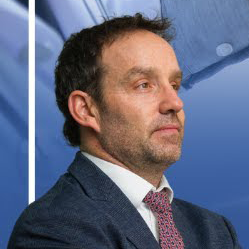If you are already the owner of your dental practice the third choice is out of the question. The second choice is a marker on the way to giving up because staying the same means atrophy. The only choice you have is the first one – to grow! I took over a dental practice that was earning over $ 1 million in revenue and transformed it into a flourishing practice earning over $4 million in annual revenue.
That’s not by accident, but it is by learning a few things the hard way. Choice number 2 can be arrived at if we stay cocooned in the present and never look to the future. I had a mentor help me look to the future for growth and life, and I want to be your dental coach to do the same for your dental practice.
If you’ve already chosen to look to the future, then you already know it inevitably brings change, a little friction, and forces you to adapt to remain a relevant care provider. I have assembled below some forecasts for the future of the dental industry because I believe it is important to prepare your dental practice to capitalize on opportunities you foresee. Here are my forecasts and predictions for the future of dentistry.
Advancements in Dental Technology
Advancements in dental technology are changing the way dentists diagnose and treat oral health conditions. For example, 3D printing can be used to create custom dental prosthetics and implants with greater accuracy and speed. If a dentist wants to expand their business to an underserved market that is considered rural, virtual reality and other video conference programs can be used to provide care and improve patient outcomes. On top of that, virtual reality can be used by a doctor as a learning tool to improve their skill set, especially when attending a class may be difficult. Lastly, the flavor of the month – artificial intelligence. Over a day, a doctor experiences fatigue which may affect their willingness to explore a problem. AI, however, can now be used by a dentist as a form of backstop by using it to analyze dental images to help identify potential issues before they become serious. The implementation of technology doesn’t have to be overly complex, but it must be targeted at solving a problem to receive proper training, use it for the betterment of the practice, and so costs don’t run out of control.
The Rise of Tele-Dentistry
Tele-dentistry has proven it has a place within the greater dental industry and this technology allows for a very interesting set of conveniences and opportunities that were not possible before the arrival of this technology. Some of the biggest gains of this technology can be post-op follow-ups where physical pain or drugs can make personal travel difficult, which would lead to decreased quality of care. In remote areas, tele-dentistry offers a medium for addressing potential emergencies and saving both doctor and patient time. Expanding tele-dentistry into the education space, oral hygiene can be taught to groups across the country to groups such as assisted living homes, schools, and churches. As you may have guessed, treatment still requires a person to visit the office, but a dental office providing such convenience translates to a client that can speak to a professional from the comfort of their own home, thus avoiding ‘white coat syndrome.’
Increasing Focus on Preventative Care
Preventative care was not a buzzword in the dental field a few years ago, but that has all changed. The marketplace has evolved because the customer is more aware than ever of the importance of maintaining good oral health – the most obvious one being a good smile. The other benefits that should be more readily marketed are the ability to eat with ease and avoid other bacterial infections. In any case, the statistics support this change in attitude. “According to the Centers for Disease Control and Prevention (CDC), around 63.0% of adults aged 18 and over and 86.9% of children aged 2-17 years had a dental visit in the past year. In 2019, around 65.5% of adults aged 18 to 64 years had a dental visit in the past year. However, the percentage of adults who had a dental visit in the past 12 months decreased from 65.5% in 2019 to 62.7% in 2020.”( FastStats – Oral and Dental Health (cdc.gov)) The result of greater preventative care could be a shift away from restorative procedures and towards a greater emphasis on preventive measures like regular cleanings, fluoride treatments, and sealants. An opportunity lies here in creating personalized dental care plans.
The Impact of Changing Demographics
The population is aging and becoming more culturally diverse at the same time. As a dental care provider, you need to adapt to the shifting needs of patients. Older patients may require more specialized care such as dentures or implants, while younger patients may be more concerned with appearance and function, especially in their prime working years. As immigration influences the cultural fiber of America, it means dentists must become adept at asking questions, taking notes, and listening to the way patients of different backgrounds like to receive care. Doing this well as a dental practice can be a competitive advantage.
The Role of Data Analytics
The role of dentists solely as care providers is no longer accurate or helpful in the industry today. Data analytics plays a more important role in dentistry because each dental practice operates as a brand and business to be marketed. The differentiating aspect of each dental practice is not only reliant on the competency of the dentist and patient outcomes, but convenience, scheduling, cleanliness, and cool technology at the office. Data analytics will help a dental practice track patient outcomes and accurately record follow-ups and treatments. Contact methods, marketing initiatives, and treatment measurements will allow a dentist to modify which services they offer, how they communicate with patients, and what kind of capital is needed for growth.
The Future of Dental Education
Dental education is likely to evolve as the profession changes. Dentists may need to learn new technologies and techniques, such as 3D printing or teledentistry, to provide the best possible care to their patients. Additionally, dental schools may need to update their curricula to address changing patient needs and the increasing importance of preventive care.
New Models of Care Delivery
As the healthcare landscape evolves, new care delivery models are likely to emerge in dentistry. For example, dental practices may work more closely with other healthcare providers, such as primary care physicians or physical therapists, to provide more comprehensive care to patients. Additionally, non-traditional dental providers, such as dental therapists or hygienists, may become more common in certain areas or for certain types of procedures. The healthcare industry is constantly evolving, and new models of care delivery have emerged to meet the changing needs of patients and improve healthcare outcomes.
Here are some of the new models of care delivery that have gained prominence in recent years:
Telemedicine:
Telemedicine refers to the remote delivery of healthcare services using telecommunication technologies. It allows patients to consult with healthcare professionals through video conferencing, phone calls, or online messaging platforms. Telemedicine provides convenient access to healthcare, especially for patients in remote areas or those with limited mobility. For dentists, this could become a new service offering and present opportunities to increase loyalty, provide more care, and grow the practice.
Patient-Centered Medical Homes (PCMH):
PCMH is a team-based approach to healthcare where a primary care physician coordinates comprehensive and continuous care for patients. This model focuses on building a strong patient-provider relationship, emphasizing preventive care, and coordinating care across different healthcare settings to ensure holistic and coordinated treatment. Just like massage and chiropractic treatments are like peanut butter and jam, good oral health, and a functioning digestive system are inseparable. This form of care is an opportunity to broaden the care dentistry is associated with.
Accountable Care Organizations (ACOs):
ACOs are networks of healthcare providers, including hospitals, primary care physicians, specialists, and other healthcare professionals, who work together to deliver coordinated care to a defined population of patients. The goal is to improve the quality of care, enhance patient outcomes, and control healthcare costs through shared responsibility and financial incentives. This is where dentistry moves beyond the inaccurate misnomer that it is ‘cosmetic.’ Networking with other professionals is a growth opportunity.
Retail Clinics:
Retail clinics are walk-in healthcare facilities typically located in pharmacies, supermarkets, or retail stores. They offer convenient access to basic healthcare services, such as vaccinations, screenings, minor illness treatment, and preventive care. Retail clinics aim to provide affordable and easily accessible care for common ailments and routine health needs. The biggest challenges to overcome are related to each other – retail hours and staffing. If they are called, however, the branding position can be rewarding.
Virtual Care Teams:
Virtual care teams leverage technology to connect healthcare providers across different specialties and locations, allowing them to collaborate on patient care remotely. This model enables seamless coordination among providers, enhances communication, and facilitates the sharing of medical information, ultimately improving patient outcomes. Similar to ACOs and medical homes, this is a virtual version of collaborating care professionals. This is where the line blurs between running a dental practice or a dental tech business.
Mobile Health (mHealth) Solutions:
mHealth involves the use of mobile devices, such as smartphones and wearable devices, to deliver healthcare services and monitor patient health. It includes applications for health tracking, remote patient monitoring, medication adherence, and health education. mHealth empowers individuals to actively manage their health and enables healthcare providers to deliver personalized care and interventions. It is difficult to make an app for a device in a person’s mouth, but mobile health solutions can be useful for tracking blood pressure, pulse, and other baseline metrics upon prescribing medication. This is where data analytics is critical.
Integrated Behavioral Health:
Integrated behavioral health models combine mental health and substance abuse services with primary healthcare. By integrating these services, patients receive comprehensive care that addresses both their physical and mental health needs. This model aims to improve overall health outcomes and reduce the stigma associated with seeking mental health treatment. One of the first things that suffers when people have substance abuse issues is their oral health. A dentist providing a service to someone to restore a person’s mouth and teeth to fit and function is a life-changing event that can ignite a person’s self-esteem.
The Impact of Changing Regulations
Regulations around dental practice and insurance are likely to change over time, which could impact both the delivery of care and the business of dentistry. For example, changes in insurance reimbursement rates could affect the profitability of dental practices, while new regulations around the use of teledentistry could affect how dentists provide care to their patients. Regulations and legislation can have an impact on the services a dental practice offers, their profitability, the scope of dentistry professionals, and how patient records and privacy are stored and managed. Stay tuned in and adapt your practice as required.
The Importance of Patient Experience
As patients become more involved in their care and have higher expectations for their healthcare experiences, dentists will need to prioritize the patient experience to retain their patients and maintain their reputations.
In conclusion, the future of dentistry is likely to be shaped by various factors, including advancements in technology, changing demographics, the increasing importance of preventative care, and evolving regulations and models of care delivery. Dentists will need to adapt to these changes to provide the best possible care to their patients and remain competitive in the marketplace. Additionally, the dental profession will need to prioritize the patient experience and stay abreast of new technologies and best practices to meet the evolving needs of patients and provide high-quality care. If all of this is confusing you, do what I did – get a dental business coach to help you look to the future of your business and break down your thoughts into bite-sized actions to grow incrementally.

Newsletter
Join our newsletter to get secret tips directly in your inbox!
News Letter
*We Hate Spam!



